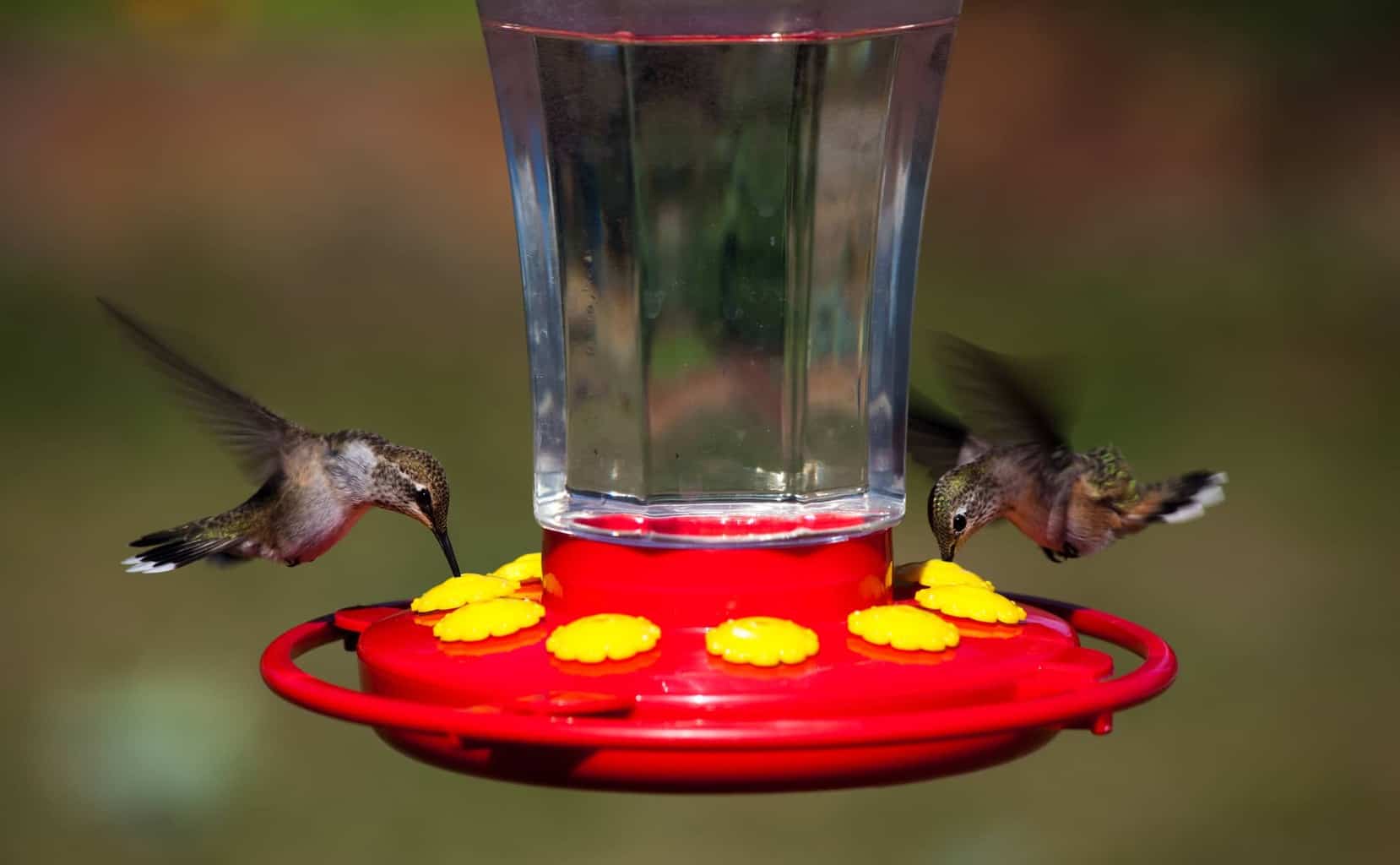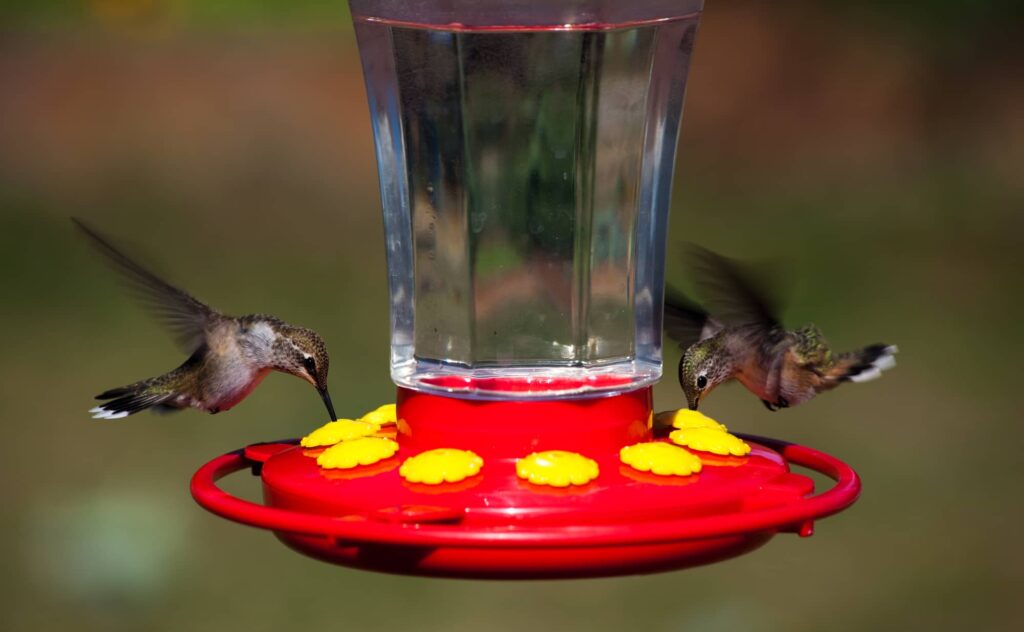Everything about hummingbirds is amazing, from their tiny size to their continent-spanning migrations, from their jewel-colored feathers to their ability to remember every flowering plant they feed from year after year.
It’s not surprising that everyone gets excited about the arrival of these tiny marvels! In California, not only are you treated to the spectacle of the hummingbird migration, but you get some native hummingbirds as permanent neighbors. What could be better than that?!
Let’s dive in and learn more about these miniature marvels and find out when they’ll be arriving in California.
When Will the Hummingbirds Arrive in California?
Hummingbirds migrating to California begin arriving in late January. This spring migration continues until the end of June, at which point all the hummingbirds that are migrating onward have left California.
California residents are lucky enough to have three species of hummingbirds that stay with them year-round! These are Anna’s hummingbird, Allen’s hummingbird, and the Calliope hummingbird.
Do the Hummingbirds Arrive in California All at Once or Gradually?
The hummingbirds migrating through California arrive over several months. Hummingbirds migrate as individuals rather than flocks, and each species is on a slightly different timetable as the hummingbirds seek out the place they were born to return for nesting.
Male hummingbirds will arrive first. They depart about a week before the females so that they can seek out food sources and establish territories around them. They will fiercely defend these territories from other hummingbirds and sometimes larger birds and even animals!
Female hummingbirds will arrive later and join the males in their territories. This arrangement gives them a source of food at the ready to begin the vital tasks of mating and rearing their young.
Does the Weather Affect the Arrival of the Hummingbirds?
The hummingbirds are migrating north to meet the blooming flowers in a carefully-timed journey that ensures they will have access to the maximum amount of nectar. Unfortunately, climate change and rising temperatures are harming hummingbirds in California.
The ocotillo is a vital source of nectar for hummingbirds in California, producing flowers even in drought years. But due to climate change, rising temperatures are causing the ocotillo to bloom earlier and earlier each year.
This is bad news for migratory hummingbirds, such as the Rufous hummingbird, flying through California in the spring expecting to eat nectar from the ocotillo flowers. By the time they’ve arrived, those flowers may have already come and gone.
You can help hummingbirds by participating in citizen science studies that collect information on the changes affecting the birds and putting out more feeders and hummingbird-friendly native plants.

When Should I Put Out Hummingbird Feeders in California?
In California, you should put out your hummingbird feeders at the beginning of January, or about 1-2 weeks before you expect the earliest migrating hummingbirds.
Hummingbirds have extraordinary memories and return year after year to the same places to feed. But if they arrive early and your feeders aren’t at the ready, they may be forced to move on. To fuel their incredible hovering flights, hummingbirds must eat very frequently–sometimes as often as every five minutes.
When Should I Take Hummingbird Feeders Down in California?
You can take down your hummingbird feeders in California in mid-November, or two weeks after you last see a hummingbird use your feeders. The migrating hummingbirds will have departed by this time.
However, since California is lucky enough to have three year-round resident hummingbird species, you might just want to keep your feeders up all year! In particular, if hummingbirds are still coming to your feeders during the winter, they are likely to be relying on that food source, so you should leave them up.
Which California Flowers Attract Hummingbirds?
Hummingbirds migrate because they follow a trail of nectar-bearing flowers coming into bloom. You can make that path point towards your backyard by planting the hummingbirds’ favorite flowers.
If you choose California native plants for your garden, you’ll get drought-resistant and hardy plants for your local growing conditions. They’ll also benefit your local ecosystem while they’re busy attracting hummingbirds to your yard. Win-win!
Here are some native California plants that are hummingbird favorites:
- Evening Primrose (Oenothera elata)
- Red Yucca (Hesperaloe parviflora)
- Manzanitas (Arctostaphylos sp.)
- Fuschia-flowered Gooseberry (Ribes speciosum)
- California Fuschia (Epilobium canum)
- Western Columbine (Aquilegia formosa)
- Black Sage (Salvia mellifera)
- Hummingbird Sage (Salvia spathacea)
- California Figwort (Scrophularia californica)
- Coastal Prickly Pear (Opuntia littoralis)
- Red Monkey Flower (Diplacus puniceus)
- Liveforever (Dudleya lanceolata)
- Cardinal Flower (Lobelia cardinalis)
Invite Hummingbirds to the Party!
In California, roll out the feeders and get ready for hummingbirds to arrive in January because the migration starts early! Enjoy the beauty of migrating and breeding hummingbirds throughout the spring, summer, and fall months, and wish the latest-departing migrants a bon voyage by mid-November. But don’t worry. There are three resident hummingbird species in California to keep you company all year long!

